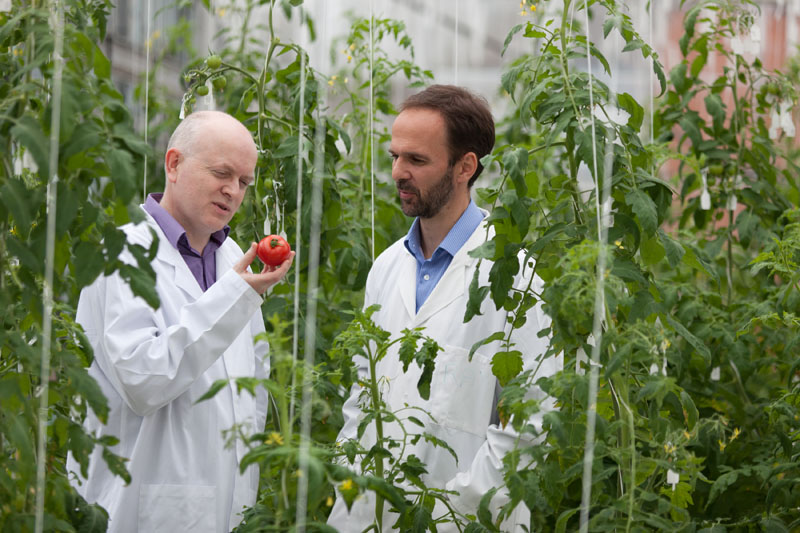Published: 05/30/2012 01:07 PM EDT on LiveScience
For years scientists have slaved away, trying to piece together the genes that make up the ripe, red goodness that is the tomato. They have finally published the fleshy fruit's genome in full.
The genome of any species is the DNA code that is stored as a blueprint inside every cell of every individual of that species. The DNA letters, called base pairs, are organized into genes, which are translated into proteins, the building blocks and machinery of every cell.
Decoding these genes can help researchers understand the different types of proteins found in organisms, and how these proteins make that species different from every other species. These kinds of insights from the genome could help crop researchers improve the yield, nutritional content, disease resistance, taste and color of tomatoes, they say.
"For any characteristic of the tomato, whether it's taste, natural pest resistance or nutritional content, we've captured virtually all those genes," study researcher James Giovannoni, of Cornell University, said in a statement. "Tomato genetics underlies the potential for improved taste every home gardener knows and every supermarket shopper desires and the genome sequence will help solve this and many other issues in tomato production and quality."
Generic and wild genomes
The researchers sequenced the genome of the tomato species Solanum lycopersicum, of the variety "Heinz 1706," as their type tomato. These tomatoes possess some 35,000 genes arranged on 12 chromosomes (large arrangements of hundreds of genes packed into one strand), the researchers said.
Knowing the sequence of one tomato can help seed companies and plant breeders get a grasp on what makes different varieties, like heirloom tomatoes, different from the generic grocery tomato.
Because the variability between two varieties is pretty small, it's easier to use the Heinz 1706 genome as a guide, and pinpoint the differences that lead to changes in color, taste, texture, size and shapethat distinguish one variety from another.
Tomato vs. potato
The genome is also important in learning why the tomato is so different from its genetic relatives in the nightshade family of flowering plants, which includes the potato, pepper and even coffee. Scientists want to know what genes have changed that gives each of these species their distinct flavor and look.
"Now we can start asking a lot more interesting questions about fruit biology, disease resistance, root development and nutritional qualities," Giovannoni said.
Tomatoes represent a $2 billion market in the United States alone. The USDA estimates that Americans consume, on average, more than 72 pounds (33 kilograms) of tomato products annually. Researchers have even developed a robot tomato harvester to go into space (or just use here on Earth).








Post a Comment